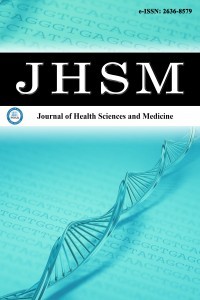1.
Aygencel G, Türkoglu M. Characteristics, outcomes and costsof prolonged stay ICU patients/yogun bakimda uzun yatanhastalarin özellikleri, sonuçları ve maliyetleri. Dahili ve CerrahiBilimler Yogun Bakim Derg. 2011;2(3):53.
2.
Nice N. Acutely ill patients in hospital. Recognition of andresponse to acute illness in adults in hospital. l. NICE clinicalguideline 50 developed by the centre for clinical practice at NICE,NHS; 2007.
3.
Luce JM, Rubenfeld GD. Can health care costs be reduced bylimiting intensive care at the end of life? Am J Respir Crit CareMed. 2002;165(6):750-754.
4.
TCSSYB Yataklı Sağlık Tesislerinde Yoğun Bakım HizmetlerininUygulama Usul ve Esasları Hakkında Tebliğ, Ekler: 29.05.2013Tebliğ Ekleri. 2013.
5.
Priestap FA, Martin CM. Impact of intensive care unit dischargetime on patient outcome. Crit Care Med. 2006;34(12):2946-2951.
6.
Medicine FoIC. Guidelines for the provision of intensive careservices version 2. FICM London; 2019.
7.
Dokuz Eylül Üniversitesi Tıp Fakültesi Konsültasyon Prosedürü.2017.
8.
Jordan MR, Conley J, Ghali WA. Consultation patterns andclinical correlates of consultation in a tertiary care setting. BMCRes Notes. 2008;1(1):1-6.
9.
Mittal MK, Kashyap R, Herasevich V, Rabinstein AA, Wijdicks EF.Do patients in a medical or surgical ICU benefit from a neurologicconsultation? Int J Neurosci. 2015;125(7):512-520.
10.
Dugar S, Choudhary C, Duggal A. Sepsis and septic shock:Guideline-based management. Cleveland Clin J Med. 2020;87(1):53-64.
11.
Schouten J, De Angelis G, De Waele J. A microbiologist consultantshould attend daily ICU rounds. Intens Care Med. 2020;46(2):372-374.
12.
Salinas M, López-Garrigós M, Asencio A, et al. Alert value reporting:a new strategy for patient safety. Clin Biochem. 2013;46(3):245-249.
13.
Yataklı Tedavi Kurumları Enfeksiyon Kontrol Yönetmeliği:Resmi Gazete; 2005 [Available from: resmigazete.gov.tr/eskiler/2005/08/20050811-6.htm.
14.
Peris A, Bonizzoli M, Iozzelli D, et al. Early intra-intensive careunit psychological intervention promotes recovery from posttraumatic stress disorders, anxiety and depression symptoms incritically ill patients. Crit Care. 2011;15(1):1-8.
15.
Tiruvoipati R, Botha J, Fletcher J. Australia and New ZealandIntensive Care Society (ANZICS) Clinical Trials Group. Intensivecare discharge delay is associated with increased hospital lengthof stay: a multicentre prospective observational study. PLoS One.2017;12(7):e0181827.
16.
Van der Sluijs AF, Van Slobbe-Bijlsma ER, Chick SE, et al. Theimpact of changes in intensive care organization on patientoutcome and cost-effectiveness—a narrative review. J Intens Care.2017;5(1):1-8.
17.
Toptas M, Sengul Samanci N, Akkoc İ, et al. Factors affecting thelength of stay in the intensive care unit: our clinical experience.BioMed Res Int. 2018;2018.
18.
Norris C, Jacobs P, Rapoport J, Hamilton S. ICU and non-ICUcost per day. Can J Anaesth. 1995;42(3):192-196.
19.
Yıldız E, Tokur ME, Özlem Ö, Aydın T. Hastaların yoğun bakımünitelerinden taburcu edilememe nedenleri ve maliyeti. MustafaKemal Üniversitesi Tıp Derg. 10(38):88-93.
20.
Karabatsou D, Tsironi M, Tsigou E, et al. Variable cost of ICU care,a micro-costing analysis. Intensive Crit Care Nurs. 2016;35:66-73.
21.
Dasta JF, McLaughlin TP, Mody SH, Piech CT. Daily cost of anintensive care unit day: the contribution of mechanical ventilation.Crit Care Med. 2005;33(6):1266-1271.
22.
Lefrant JY, Garrigues B, Pribil C, et al. The daily cost of ICUpatients: a micro-costing study in 23 French intensive care units.2015;34(3):151-157. Doi: 10.1016/j.accpm.2014.09.004

